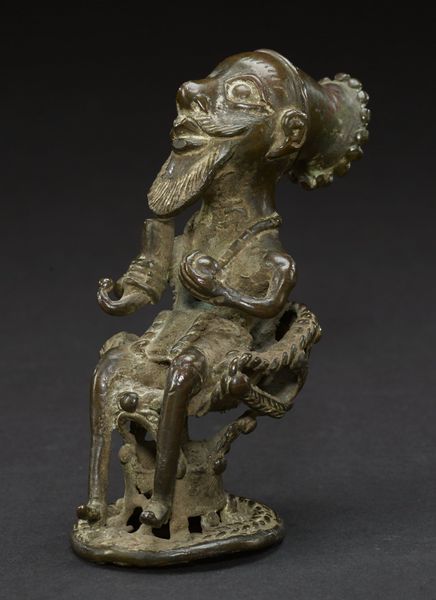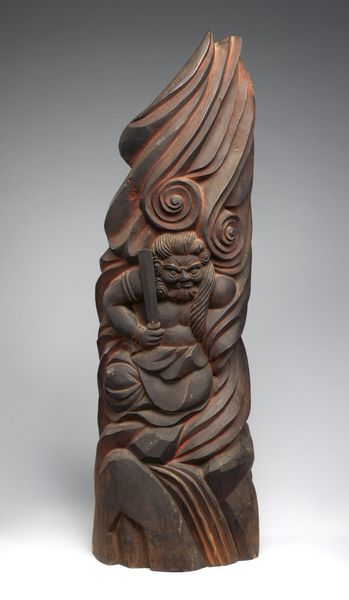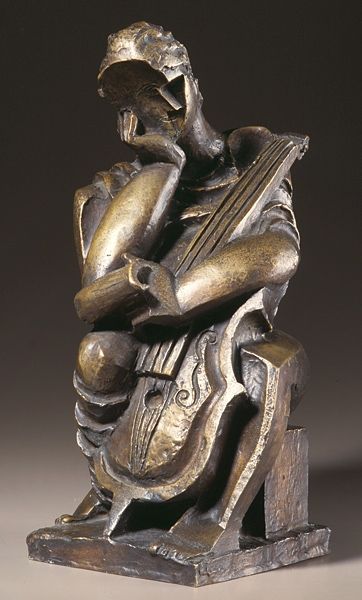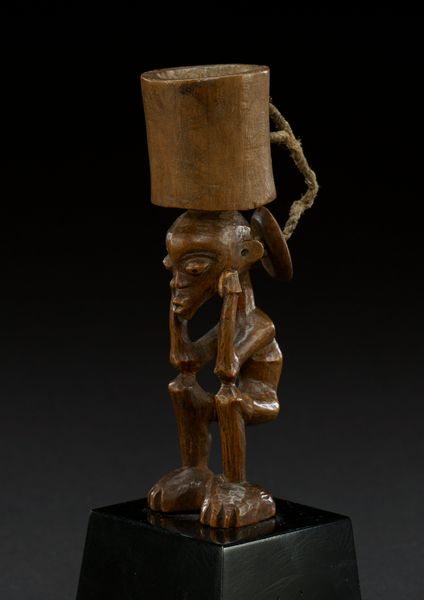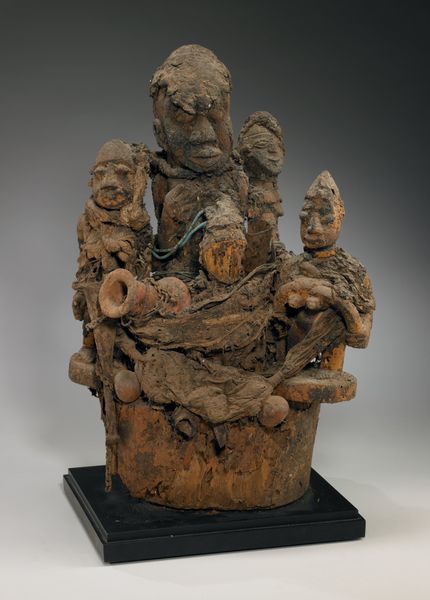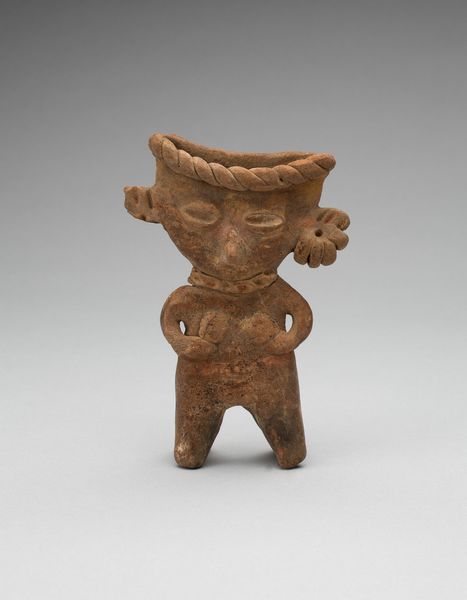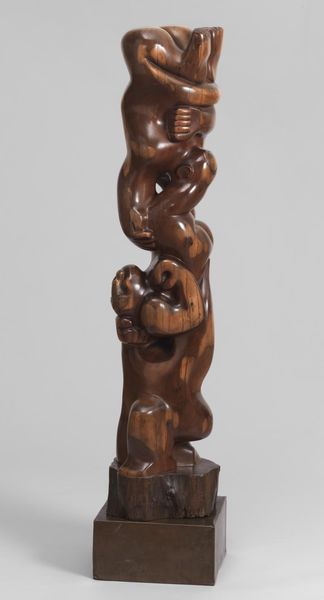
Mendicant carrying a child on his back c. 18th century
0:00
0:00
carving, sculpture, wood
#
carving
#
asian-art
#
ukiyo-e
#
japan
#
figuration
#
sculpture
#
wood
Dimensions: 4 1/8 x 1 5/8 x 1 1/8in. (10.5 x 4.1 x 2.9cm)
Copyright: Public Domain
Curator: Standing before us, we have a marvelous carving attributed to Yoshimura Shūzan from the 18th century. The work is titled "Mendicant carrying a child on his back", currently residing here at the Minneapolis Institute of Art. It's a wooden sculpture, seemingly small in stature. What strikes you about this piece initially? Editor: It has a rough hewn and worn affectation – like a kindly troll lumbering through a fairy tale. There's such tenderness and burden coexisting in the wood, it resonates. What sort of wood is it? Curator: Determining the precise species is difficult, but it's likely a wood indigenous to Japan, such as cypress or boxwood, prized for their fine grain and suitability for intricate carving. Editor: That makes sense – cypress is naturally oily and fragrant which aids preservation of such precious objects over long periods. Curator: Exactly! What I find fascinating is how Yoshimura has captured not just the physical act of carrying but the emotional weight. This isn’t simply a representation of labor; it's a portrait of dedication, struggle, and humanity in its most distilled form. It echoes images of the Christian Saint Christopher – another well known ‘bearer’. What resonances do you detect, given your expertise in iconography? Editor: I note particularly how the sculptor directs the line of vision toward the viewer. Despite his humble role, this figure embodies a strength rooted deep in the cultural memory – echoing, as you noted, St. Christopher as a figure of resilience across vast terrains and tumultuous times. Curator: I appreciate you calling out that cultural comparison; It encourages me to speculate. To look beyond what immediately strikes the eye. The texture and posture tell tales that a glance never could! Editor: It also begs the question of audience. Where did the piece "live"? Who beheld its message when it was crafted – a simple offering in a temple – or the possession of a merchant or notable of the era? Curator: Considering that there are few surviving pieces makes that provenance difficult to establish but those possibilities absolutely amplify our understanding of its potential social relevance. Thank you! Editor: It's an enigmatic creation that invites endless interpretation – it almost doesn't want you to settle on any fixed conclusion, so thanks for inviting me on that brief exploration!
Comments
No comments
Be the first to comment and join the conversation on the ultimate creative platform.

